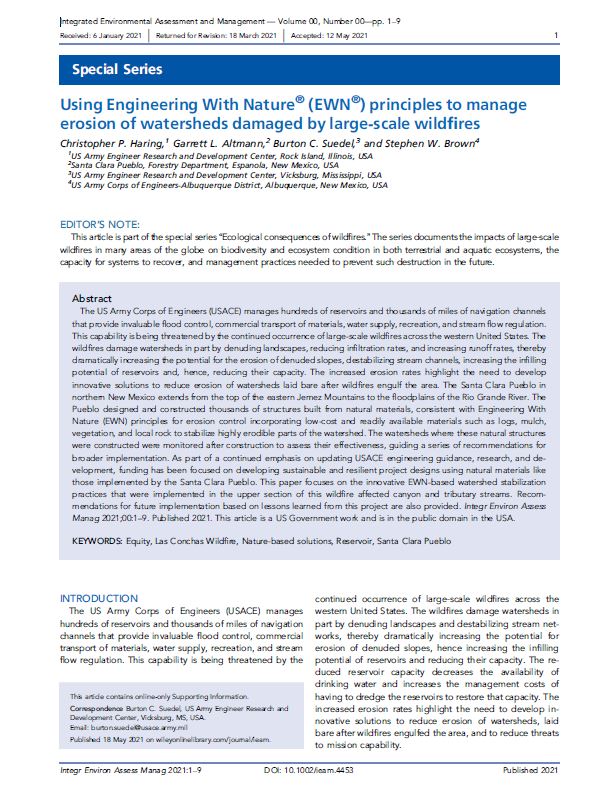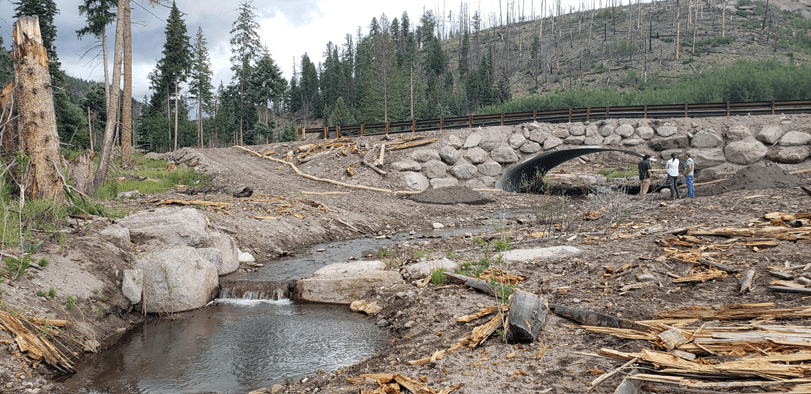Integrated Environmental Assessment and Management
The US Army Corps of Engineers (USACE) manages hundreds of reservoirs and thousands of miles of navigation channels that provide invaluable flood control, commercial transport of materials, water supply, recreation, and stream flow regulation. This capability is being threatened by the continued occurrence of large-scale wildfires across the western United States. The wildfires damage watersheds in part by denuding landscapes, reducing infiltration rates, and increasing runoff rates, thereby dramatically increasing the potential for the erosion of denuded slopes, destabilizing stream channels, increasing the infilling potential of reservoirs and, hence, reducing their capacity. The increased erosion rates highlight the need to develop innovative solutions to reduce erosion of watersheds laid bare after wildfires engulf the area. The Santa Clara Pueblo in northern New Mexico extends from the top of the eastern Jemez Mountains to the floodplains of the Rio Grande River. The Pueblo designed and constructed thousands of structures built from natural materials, consistent with Engineering With Nature (EWN) principles for erosion control incorporating low-cost and readily available materials such as logs, mulch, vegetation, and local rock to stabilize highly erodible parts of the watershed. The watersheds where these natural structures were constructed were monitored after construction to assess their effectiveness, guiding a series of recommendations for broader implementation. As part of a continued emphasis on updating USACE engineering guidance, research, and development, funding has been focused on developing sustainable and resilient project designs using natural materials like those implemented by the Santa Clara Pueblo. This paper focuses on the innovative EWN-based watershed stabilization practices that were implemented in the upper section of this wildfire affected canyon and tributary streams. Recommendations for future implementation based on lessons learned from this project are also provided. Integr Environ Assess Manag 2021;00:1–9. Published 2021. This article is a US Government work and is in the public domain in the USA.



